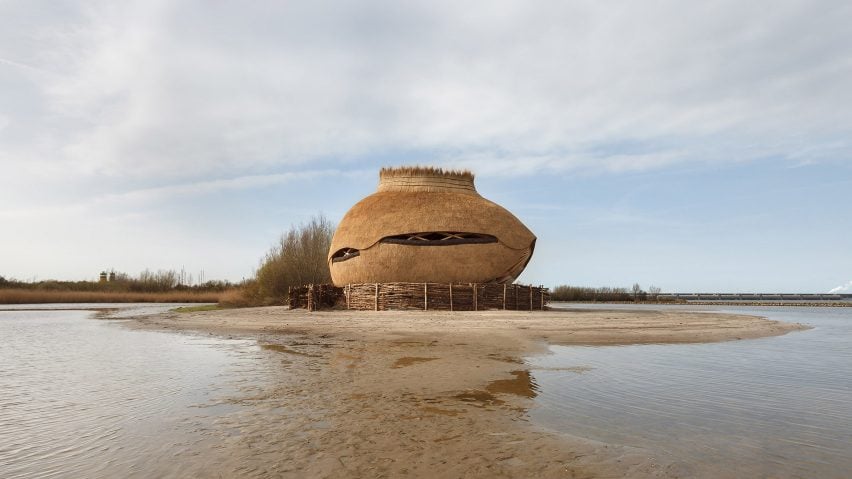
Thatched reeds cover egg-shaped observatory for watching birds
RAU Architects and Ro&Ad Architects have designed the egg-shaped Tij Observatory for the Scheelhoek Nature Reserve in Stellendam, the Netherlands, which can be taken apart and rebuilt elsewhere.
Designed for birdwatchers observing the Sandwich terns that nest off the coast of the island of Scheelhoek, the observatory takes its form from a tern's egg.
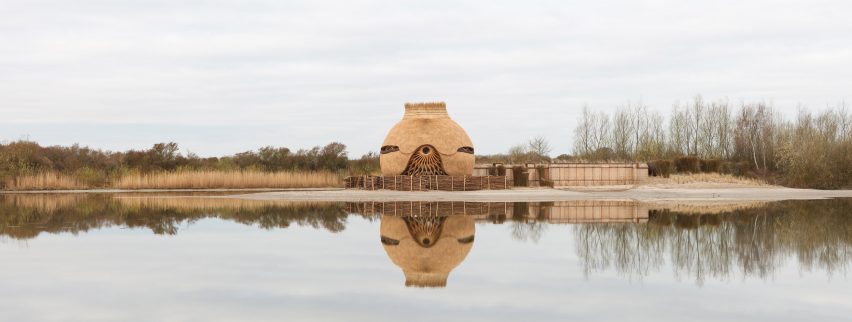
Amsterdam studio RAU Architects, in collaboration with Ro&Ad Architects, clad the rounded form in thatched reeds from the local nature reserve.
Tij Observatory, which translates as Tide, is one of a series of commissions funded by the Dutch lottery. It was built to celebrate the opening of sluices at Haringvliet, an inlet of the North Sea that was originally closed as part of the Delta Works in the 1960s.
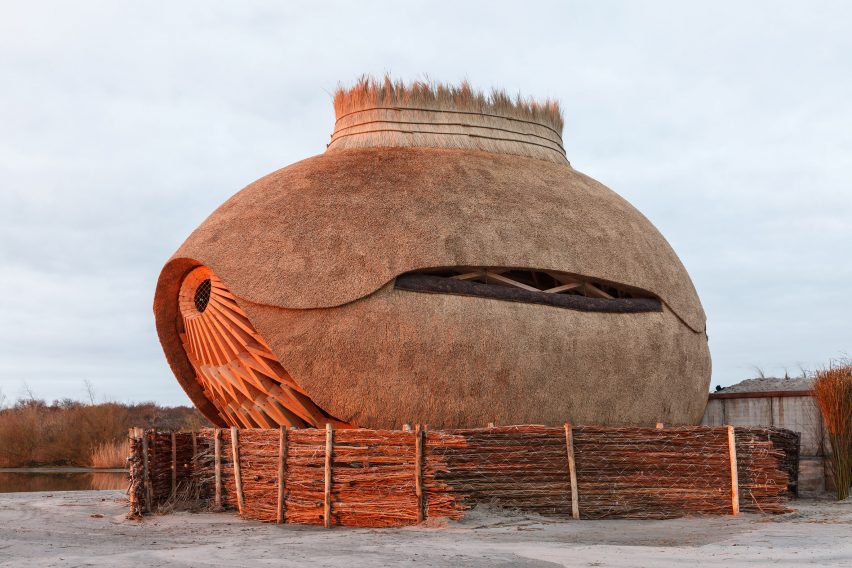
The bird-egg frame was parametrically designed to determine the best shape and position of openings and features components that can be reused according to the principles of reversible design.
It was built using a file-to-factory system, with 402 parts delivered and assembled on site. Designed to rest lightly on the nature reserve, it can be dismantled and moved if required.
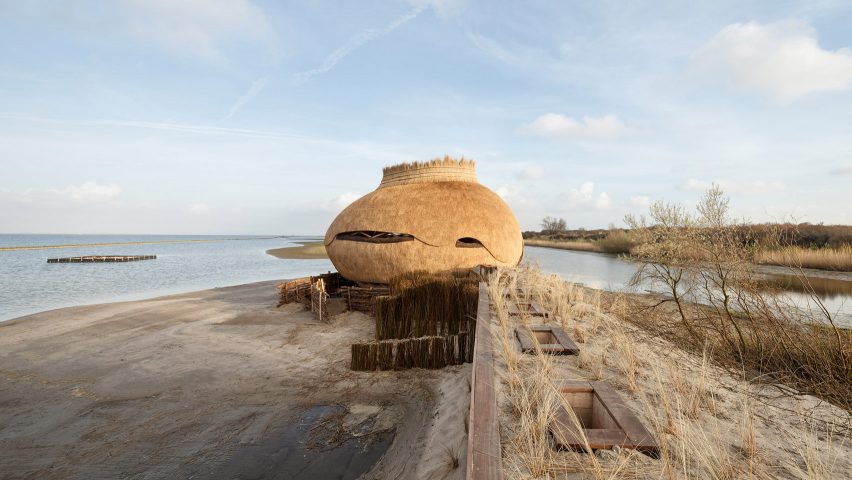
"By building everything in such a way that everything can be taken apart without losing any of its value, we ensure that the strain on the ecosystem is minimal," said Thomas Rau, founder of RAU Architects.
"Thanks to its complete rebuilding capabilities, modularity and materialisation, it fully meets all the key point for a sustainable structure with circular potential."
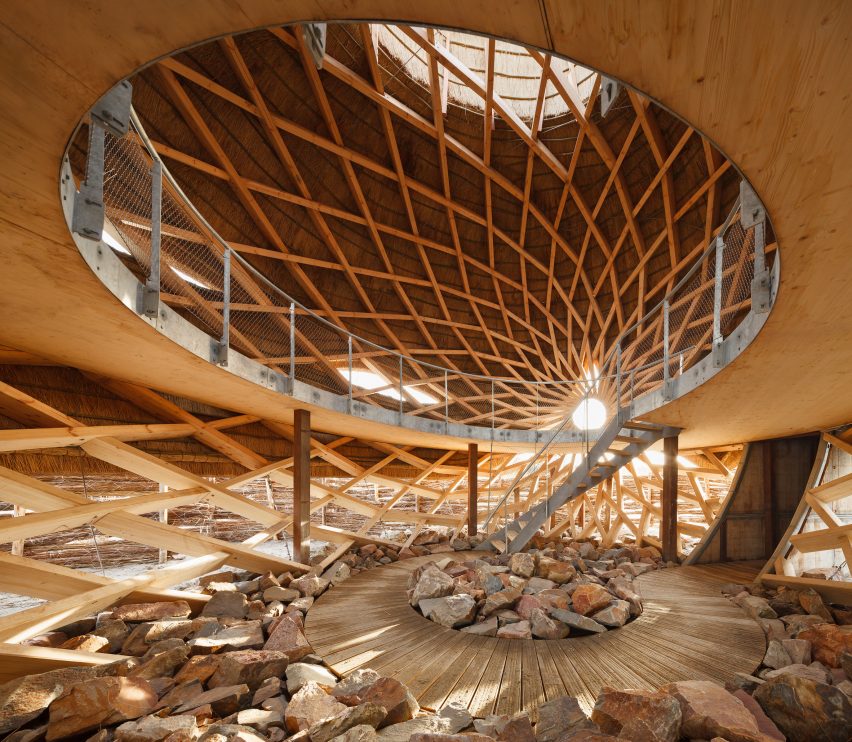
Materially, this timber frame is divided into two. The bottom section, which is expected to flood several times a year, is built from water-resistant beams of Accoya, a modified sustainable wood, and the top section is built from pine.
To minimise disturbance to birds, the final approach to the observatory is via a tunnel built from recycled bulkheads and covered with sand and nesting holes for sand martins.
A low wooden fence built from branches surrounds the perimeter of the egg, like a nest.

Small openings on either side of the egg allow for observation, while at its tip the thatch stops to reveal the wooden structure beneath.
Inside, the structure has been left completely exposed, and the floor covered with rocks. Stairs lead up to a raised circular walkway constructed from steel and cross-laminated timber, providing views out across the landscape.
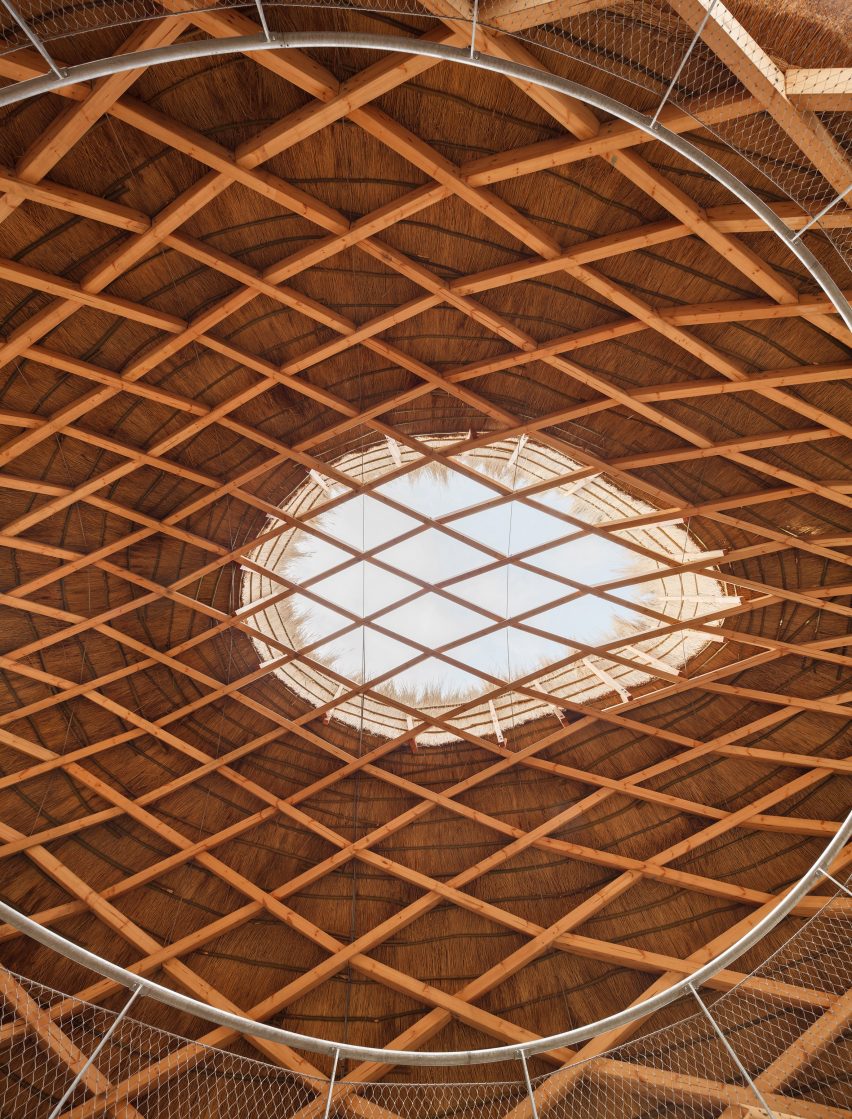
A large opening at the top of the egg, surrounded by reeds, provides light to the interior.
Architects often turn to natural materials to minimise their impact on the landscape when creating lookouts.
Norwegian architect Lars J Berge recently completed a wooden hide north of the island of Bergen, and Keeo4design designed an elevated spiralling lookout point in the Czech Republic.
Photography is by Katja Effting.